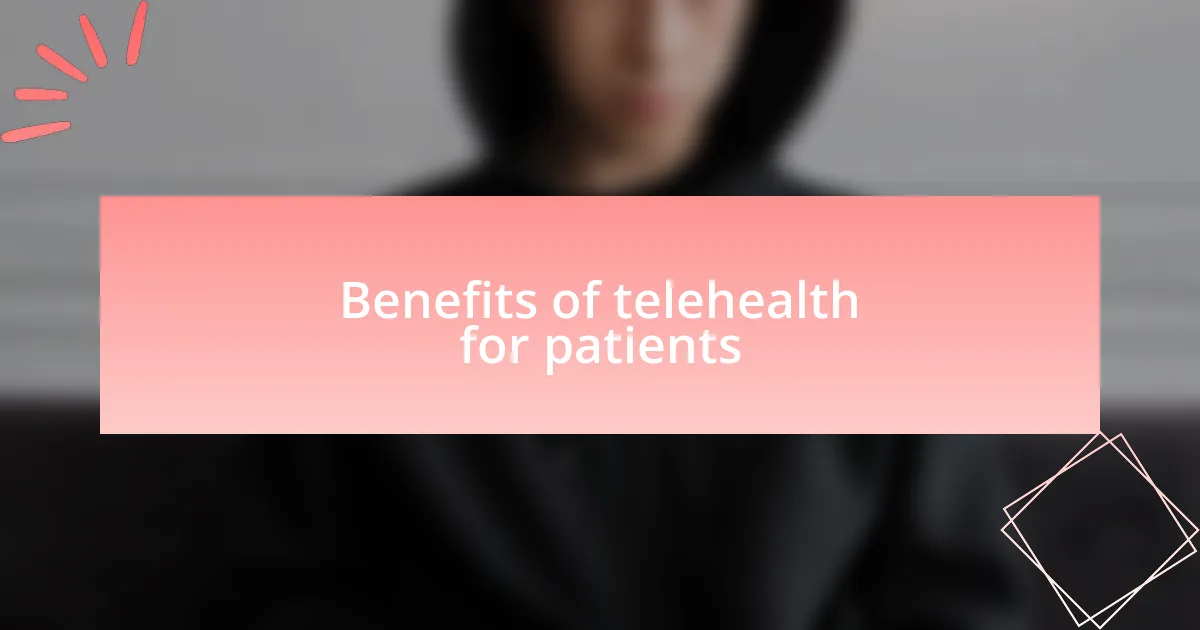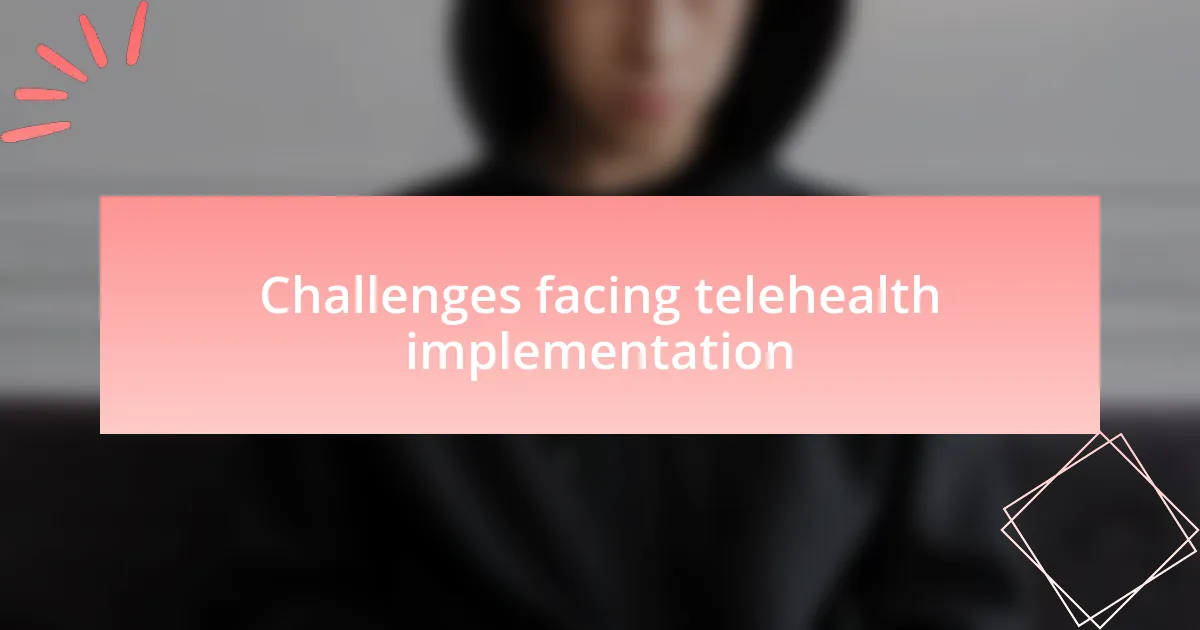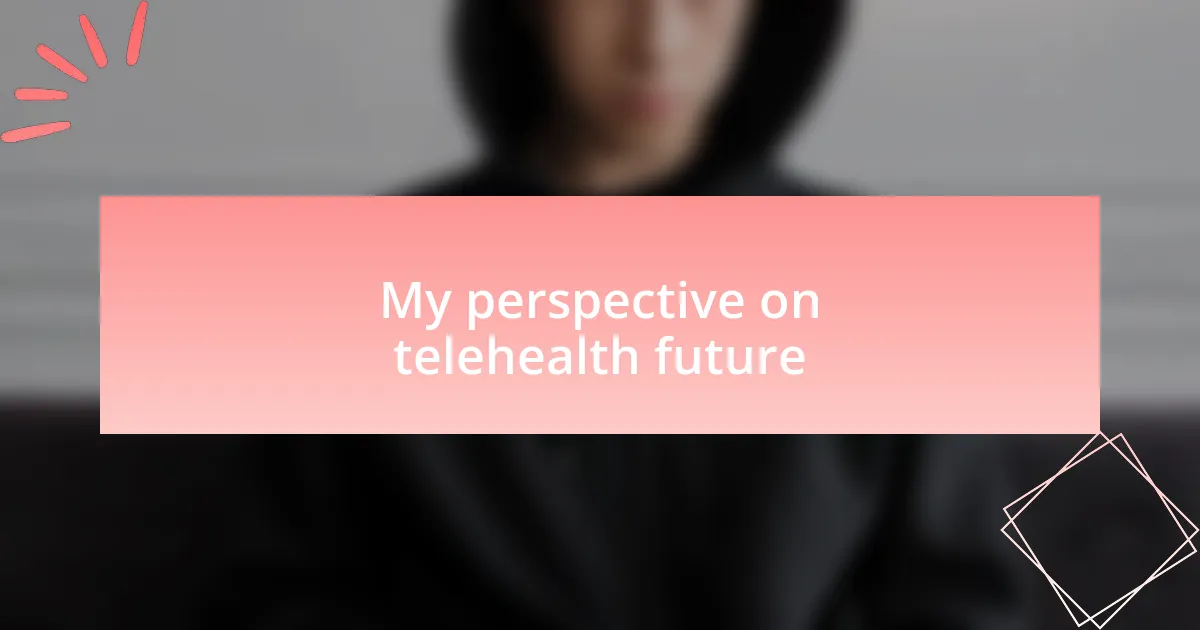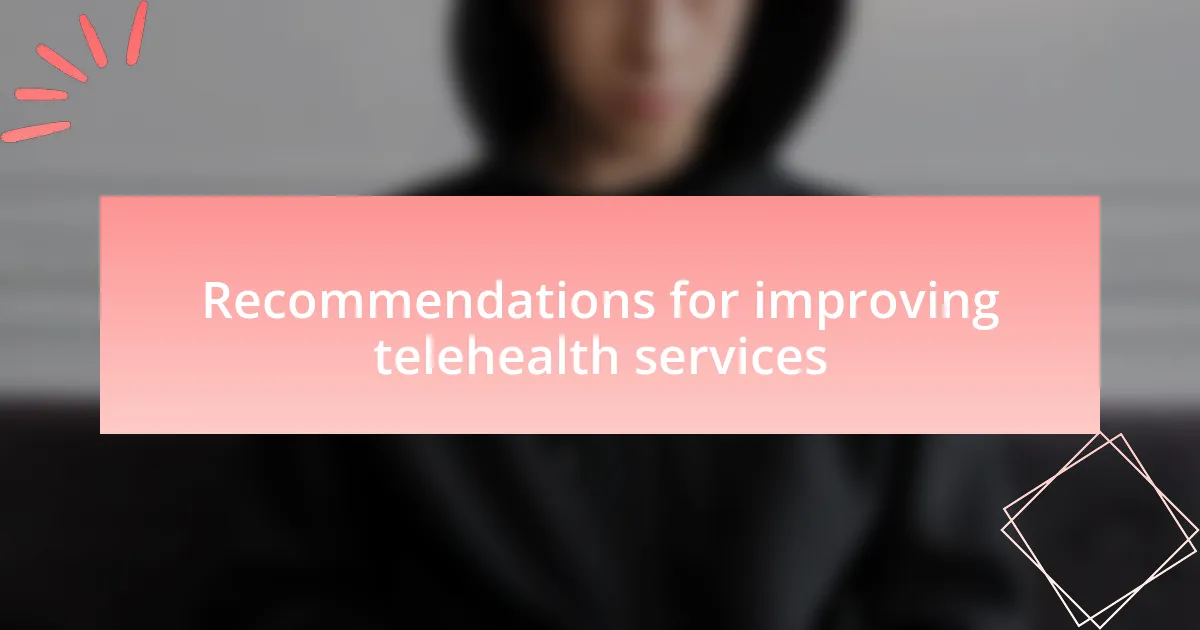Key takeaways:
- Telehealth enhances accessibility and democratizes healthcare, particularly benefiting individuals in rural areas and during crises like the pandemic.
- Key innovations include AI in virtual consultations and remote monitoring tools, improving personalization and patient empowerment.
- Challenges include the digital divide, regulatory constraints, and concerns over the quality of care in virtual settings.
- The future of telehealth requires a balance between technological innovation and maintaining human connection and data privacy.

Understanding telehealth and its importance
Telehealth has transformed the healthcare landscape, bridging gaps that once seemed insurmountable. I recall a friend who lived in a rural area, struggling to access specialist care. Without telehealth, her journey would have taken hours and required significant resources—now, a simple video call makes all the difference.
The importance of telehealth lies not just in convenience but also in its ability to democratize healthcare. Have you ever wondered how many lives could be improved with just a few clicks? I’ve seen patients who previously felt isolated and helpless gaining empowerment through telehealth services, feeling heard and valued as they engage with their healthcare providers from the comfort of their homes.
Additionally, telehealth has played a crucial role during times of crisis, like the recent pandemic. It was a lifeline for so many, offering continuity of care when traditional visits were impossible. In my experience, witnessing patients’ relief as they navigated their health concerns safely from home was a powerful reminder of the resilience and adaptability inherent in both technology and the human spirit.

Growth of healthcare technology
The growth of healthcare technology is nothing short of revolutionary. I remember attending a conference where a startup presented their AI-driven diagnostic tool. The room buzzed with energy as attendees realized the potential for such technology to greatly reduce misdiagnoses and enhance patient outcomes. Isn’t it fascinating how innovation can bring us closer to precision medicine?
As I reflect on my own experiences, the integration of wearable health devices has dramatically changed the way we monitor and manage our health. I’ve seen friends excitedly share their fitness data with their doctors, which encourages a more proactive approach to health. It raises an important question: how many of us are ready to embrace this data-driven future of personalized care?
Moreover, the rise of telehealth platforms is reshaping the accessibility of medical services, making care more inclusive than ever. I spoke with a nurse who shared how her telehealth team managed to provide mental health support to thousands during a challenging season. This collaboration exemplifies how technology not only connects healthcare providers and patients but also fosters a more compassionate approach to wellness.

Key innovations in telehealth
One of the key innovations transforming telehealth is the advent of artificial intelligence in virtual consultations. I recently observed a demonstration where AI algorithms analyzed patient responses during video calls, identifying patterns that prompted follow-up questions. This personalization sparked my enthusiasm because it bridges the gap between technology and human interaction, reminding me that care extends beyond mere diagnostics.
Another exciting development is the integration of remote monitoring tools that allow healthcare providers to track patients’ vital signs in real time. I remember hearing about a young mother whose blood pressure was monitored via a smart device while she juggled her responsibilities at home. This innovation not only eased her anxiety but also empowered her to take control of her health without sacrificing her daily life. Isn’t it incredible how technology can make healthcare feel less invasive?
Finally, the expansion of teletherapy illustrates how telehealth is transforming mental health services. A close friend shared her experience of attending therapy sessions from the comfort of her home, which eased her initial apprehension about seeking help. This shift raises a thought-provoking question: how many lives could be changed simply by making mental health support more accessible through technology? Each of these innovations demonstrates that telehealth is not just about convenience; it’s about connection and improved quality of life.

Benefits of telehealth for patients
One significant benefit of telehealth for patients is the sheer convenience it offers. I once helped my grandmother schedule a virtual appointment with her doctor, and I could see the relief wash over her face at the thought of not having to navigate traffic and waiting rooms. Doesn’t it feel wonderful when healthcare adapts to our busy lives rather than complicating them?
Telehealth also reduces the barriers that often prevent patients from seeking care. A friend of mine shared how her chronic illness made getting to the clinic a daunting task, so she often delayed appointments. After switching to telehealth, she felt empowered to connect with her healthcare providers regularly, leading to timely interventions that significantly improved her quality of life. Isn’t it amazing how eliminating those barriers can lead to better health outcomes?
Moreover, telehealth fosters a sense of connection that many patients need. I recall a conversation with a father who was anxious about his child’s health; he was relieved to have access to a pediatric specialist through a simple video call. It gave him not just answers, but peace of mind, reinforcing how accessible care can build trust and comfort in the doctor-patient relationship. What could be more soothing than knowing expert help is just a click away?

Challenges facing telehealth implementation
One major challenge in implementing telehealth is the digital divide. I’ve seen firsthand how some of my older relatives struggle with technology, which can hinder their ability to access virtual care. How do we ensure that those who need healthcare the most aren’t left behind just because they lack digital skills or access to necessary devices?
Another hurdle is the regulatory landscape that varies widely by region. I remember my excitement about scheduling an online appointment, only to discover that state laws limited cross-border telehealth practices. Isn’t it frustrating when innovations get bogged down by outdated regulations that don’t reflect the advancements we’ve made in technology?
Lastly, there’s the concern about the quality of care in virtual settings. I once participated in a telemedicine consultation that felt rushed, leaving me with lingering questions. Can we really build the same level of patient-provider rapport through a screen as we do in person? It’s a valid concern that many healthcare providers and patients share, highlighting the importance of finding the right balance in telehealth interactions.

My perspective on telehealth future
Looking ahead, I envision telehealth evolving into a cornerstone of healthcare delivery. Just the other day, I had a conversation with a friend who lives in a rural area, and she shared how telehealth has drastically improved her access to specialists. It made me realize that as technology advances, it can bridge gaps in healthcare that have persisted for years—imagine having a world where distance truly doesn’t dictate the quality of care.
However, I can’t help but wonder how the human element will be preserved in this digital landscape. I’ve often felt that the warmth of a doctor’s office—the small talk that eases anxiety—can be lost in a virtual setting. Will we be able to foster genuine connections through screens, or will the clinical nature of telehealth create a barrier that undermines patient trust and comfort?
As telehealth becomes more integrated into our daily lives, we must also consider the ethical implications of data privacy. I recall a recent discussion about sharing health information online, and it left me uneasy. How do we protect our patients’ sensitive data while still reaping the benefits of innovative technologies? This balancing act will be crucial if we want to build a sustainable future for telehealth that people feel comfortable embracing.

Recommendations for improving telehealth services
To enhance telehealth services, I believe we should prioritize user-friendly technology. Recently, I guided my elderly neighbor through a telehealth appointment for her chronic condition. The software was confusing for her, which made the experience frustrating. Ensuring accessibility for all age groups and backgrounds will be vital in reducing barriers to care.
Additionally, fostering a more personal connection in virtual consultations can greatly improve patient satisfaction. I remember feeling relieved when my doctor took an extra moment to acknowledge my concerns during a video visit; it made all the difference. Simple gestures, like checking in about my well-being before diving into clinical topics, could strengthen trust and engagement.
Lastly, it’s essential to enhance education around telehealth services for both patients and providers. During a recent outreach program, I realized many people are unaware of the available options or how to effectively use the technology. By providing clear resources and training, we can empower individuals to take full advantage of these services, ultimately leading to better health outcomes.